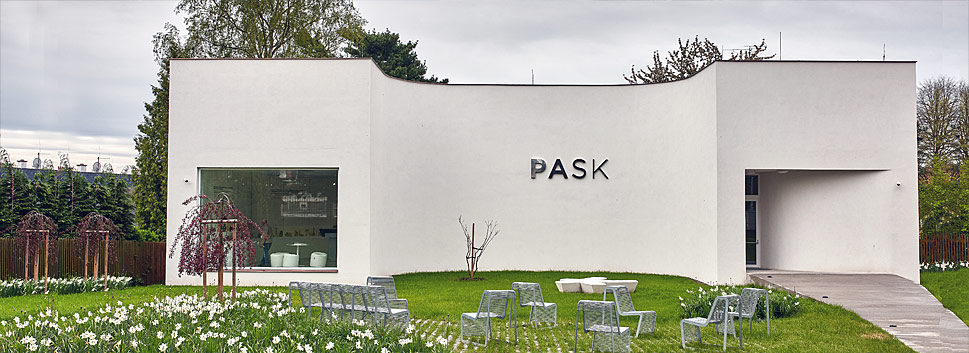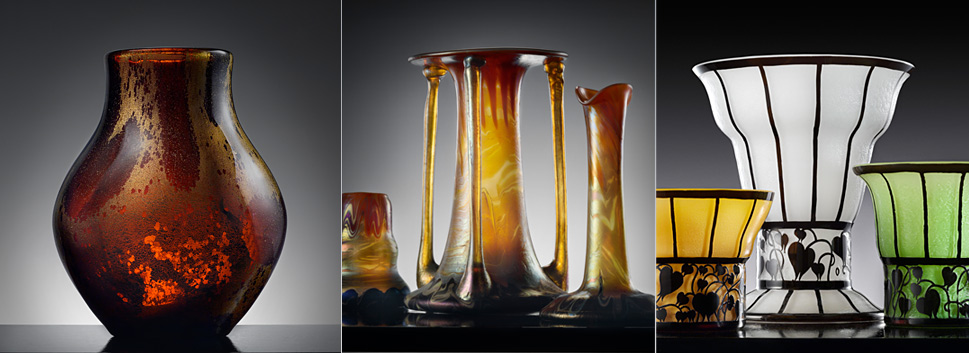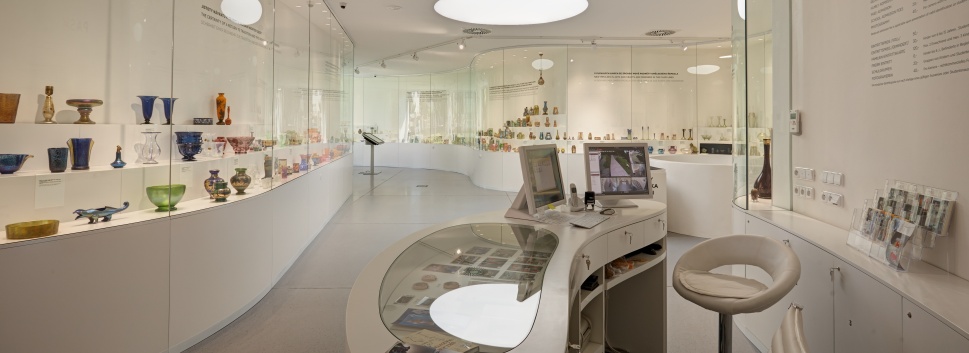THE HISTORY OF LOETZ | PAVILON SKLA PASK KLATOVY
The history of Loetz

View of glassworks in Klastersky Mlyn

The Spaun family villa in Klastersky Mlyn
History of the company Loetz and glassworks in Klášterský Mlýn
The Dawning of the Company and of Johann Loetz
Johann Loetz was first mentioned as a citizen and glass engraver in Kašperské Hory in 1798. He married well and in 1814 he founded his own glass cutting plant where he employed „many glass cutters“. His business gradually blossomed allowing him to lease the glassworks Zlatá Studna from the city in 1823, which he rebuilt and expanded. In 1826, the existing factors of the glassworks, Josef Schmid Sr. and his son Josef Schmid Jr., became his business partners and the company „Johann Loetz, Schmid & Son“ was created and existed until 1830. At that time Josef Schmid Sr. went to Germany and only Josef Schmid Jr. remained Loetz’s business partner. The men changed the name of the company to „ Loetz & Schmid“ and did business together until 1836. At that time Johann Loetz decided to develop further by leasing glassworks in Annín himself. In 1840, he became formally independent by founding the company „Johann Loetz“. He successfully operated the glassworks in Annín until his death in 1844. At that time the glassworks was already producing richly decorated glass in the Second Rococo style, which won a prize at an industrial exhibition.
Susanne Loetz in Annin and Debrník
When Johann Loetz died, his second and much younger wife Susanne was the heir of this company and was faced with the task of upholding the company in the interest of her four small children. At that time, the lease contract for the glassworks in Annín had expired and therefore Susanne Loetz moved the operations to the Debrník glassworks near Železná Ruda and continued running it under the later prestigious name of „Johann Loetz’s Widow“. The company participated in a rich collection of colored glass as well as in the first world exhibition in London in 1851. Susanne married a lawyer named Franz Gerstner in Debrnik and together bought the glassworks in Klášterský Mlýn near Rejštejn in 1851. This glassworks had been founded in 1836 by Johann Baptist Eisner from the nearby glassworks of Podlesí; after his death Susanne bought it from his son-in-law Martin Emanuel Schmid.
Susanne Loetz in Klášterský Mlýn
When Susanne Loetz-Gerstner bought Klášterský Mlýn, there were many changes; the most significant of which was the construction of a large glass cutting plant in 1855. Susanne did not run the operations herself; her brother Michael Huska helped her until 1863 followed by her son Anton, who unfortunately died young in 1877. Susanne was faced with the problem of who to pass the prosperous family business to. She decided upon her grandson Maxmilian von Spaun, who acquired the company in 1879.
Maxmilian von Spaun Sr. and the company’s most famous period.
After his accession of the company, the young factory owner soon realized that a new period had arisen and that the company’s production had to change. As a result he started focusing on the decoration of glass in a very luxurious and demanding manner. The first signs of success were experienced at world exhibitions as well as on the markets. The glassworks director Eduard Prochaska had a considerable role in the company’s economic and social success. The iridescent Art Nouveau glass from Klášterský Mlýn had already acquired a good name. The glassworks started working intensively with mainly artists in the first years of the 20th century; their production connected with the well-known names of Vienna-based architects represents the beginning of the modern glass design. Maxmilian von Spaun Jr. overtook the successful company in 1908.
The Period of Success and Downfalls
The first difficulties appeared immediately following the take-over of the company by Maxmilian von Spaun Jr. as a result of negative external influences and inexperience resulting in the company reaching bankruptcy in 1911 and remaining in bankruptcy for several years. Even in the period of bankruptcy and the First World War the company continued producing glass of an excellent quality, which led to an increase in its sales – the era of distinct colored Tango Glass appeared. Von Spaun Jr.’s younger son Fritz took over the company in 1918 and the company was relatively prosperous in the following years thanks to significant export. The Great Depression and a fire in the glassworks in 1930 brought more complications to the company resulting in repeated financial rescue attempts until its dissolution in 1939. The glassworks, however, worked under several different companies until 1947 when it finally disappeared completely. This was the end of the most famous Bohemian glassworks.











 6
6 6
6 5
5 5
5 4
4 4
4 3
3 3
3 1
1 1
1 1
1
